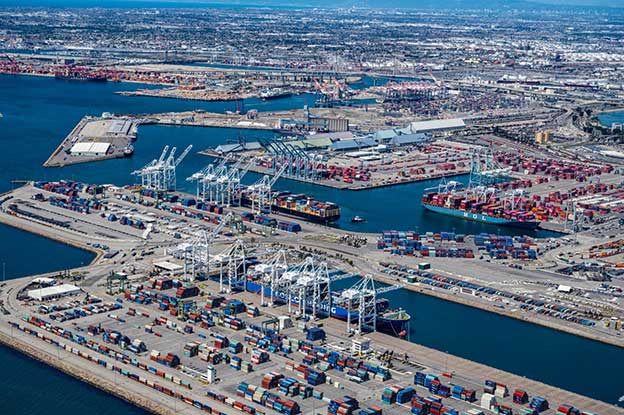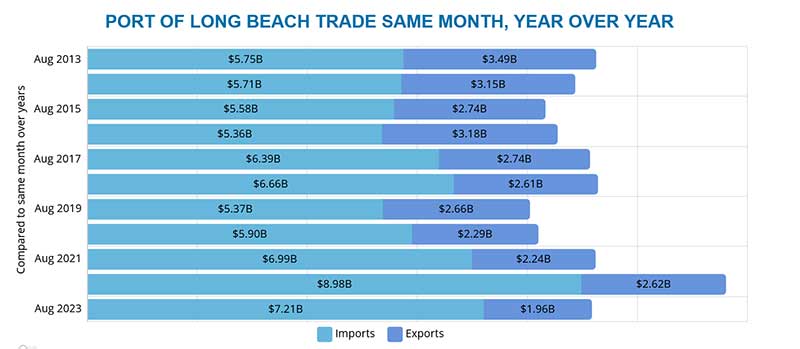By the Numbers: In 2019 alone, the Port of Long Beach’s trade totaled $93 billion, including $31.2 billion in exports and $61.8 billion in imports.
Location: Long Beach, California
Opened: June 24, 1911; 112 years ago
Land area: 3,200 acres (13 km2)
Coordinates: 33°45′18″N 118°12′54″W / 33.75500°N 118.21500°W
Value of cargo: $56.7 billion (CY 2010)
Air draft: unrestricted
Port Info – Port of Long Beach
The Port of Long Beach is the premier U.S. gateway for trans-Pacific
trade and a trailblazer in innovative goods movement, safety, environmental stewardship and sustainability. As the second-busiest container seaport in the United States, the Port handles trade valued at $170 billion annually and supports 2.6 million jobs across the nation, more than 575,000 in Southern California, and more than 50,000 jobs – or 1 in 5 – in Long Beach.
The Port of Long Beach is one of the few U.S. ports that can welcome today’s largest vessels, serving 175 shipping lines with connections to 217 seaports around the world. In 2019, the Port handled more than 7.6 million container units, achieving the second-best year in its history.
Led by the five-member Board of Harbor Commissioners and Executive Director Mario Cordero, the Port is on track for a green future, creating the world’s most modern, efficient and sustainable seaport. As part of an industry-leading $4 billion capital improvement program this decade, the Port is building some of the most modern, efficient and sustainable marine facilities in the world to accommodate bigger and bigger ships, while generating thousands of new jobs.
The Port of Long Beach prides itself on its culture of excellent customer service and the strong relationships it maintains with industry, community, environmental advocates and partner agencies.
The Ports of Los Angeles and Long Beach—which process 40 percent of the nation’s containerized imports—broke their 2018 record for annual containerized imports by 13 percent
Facts at a Glance
Each year, the Port handles:
More than 9 million 20-foot container units (TEUs)
Cargo valued at $200 billion
90 million metric tons of cargo
2,000 vessel calls
The Port’s loaded containers account for:
1/3 moving through all California ports
1/4 moving through all West Coast ports
nearly 1 in 5 moving through all U.S. ports
The Port has 22 shipping terminals:
5 break bulk (automobiles, lumber, steel, iron ore)
6 container
6 dry bulk (petroleum coke, salt, gypsum, cement)
5 liquid bulk (petroleum)
International ranking
No. 1 export seaport in the United States
21st-busiest container cargo port in the world
9th-busiest port complex (with the Port of Los Angeles) in the world by container volume, after Shanghai, Singapore, Shenzhen (China), Ningbo (China), Busan (S. Korea), Hong Kong, Guangzhou (China), and Qingdao (China)
Port-related trade supports
51,000 jobs (about 1 in 5) in Long Beach
576,000 jobs (or 1 in 20) in the five-county Southern California region
2.6 million jobs throughout the U.S. are related to Long Beach-generated trade
Regional economic impacts
$5 billion a year in U.S. Customs revenues from the Long Beach/Los Angeles ports
$46.6 billion a year in local, state and general federal tax revenues
$374 billion in direct and indirect business sales yearly
$126.8 billion in annual trade-related wages





Leave A Comment
You must be logged in to post a comment.